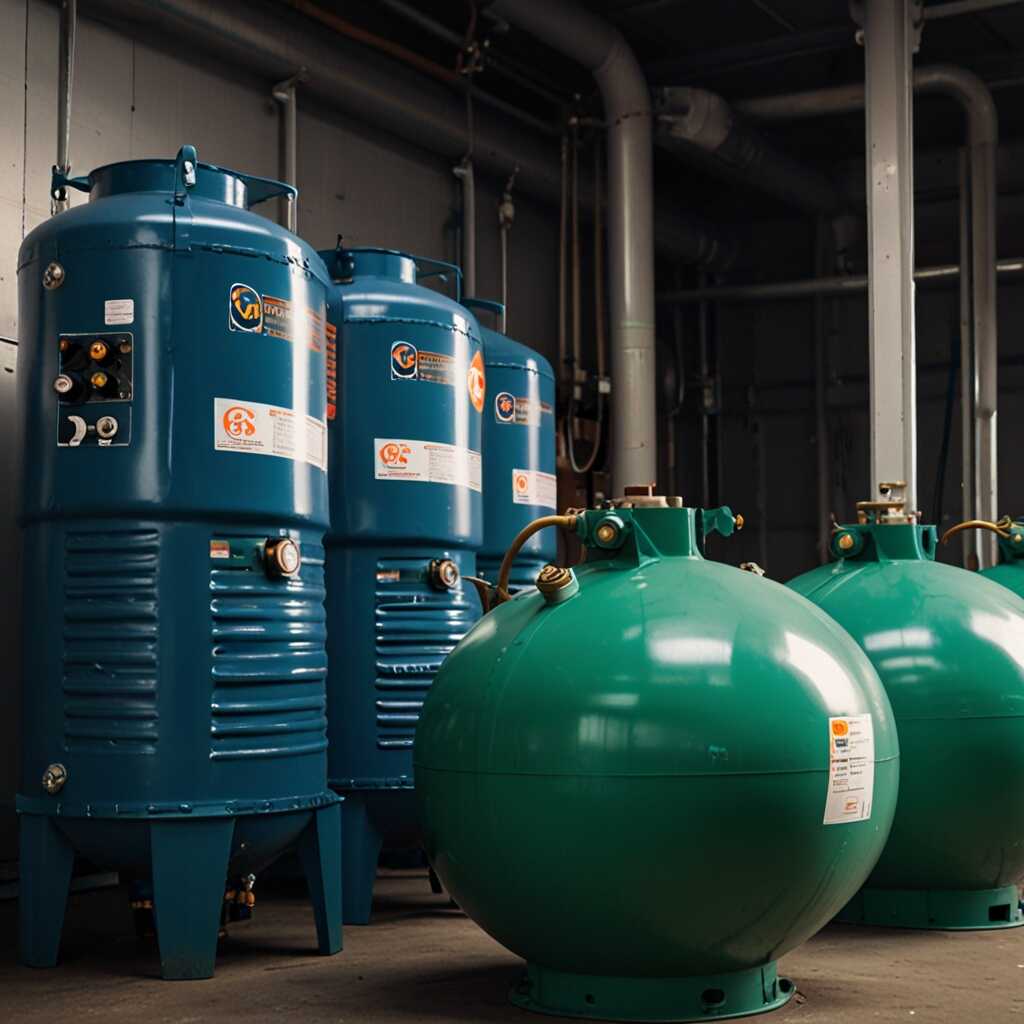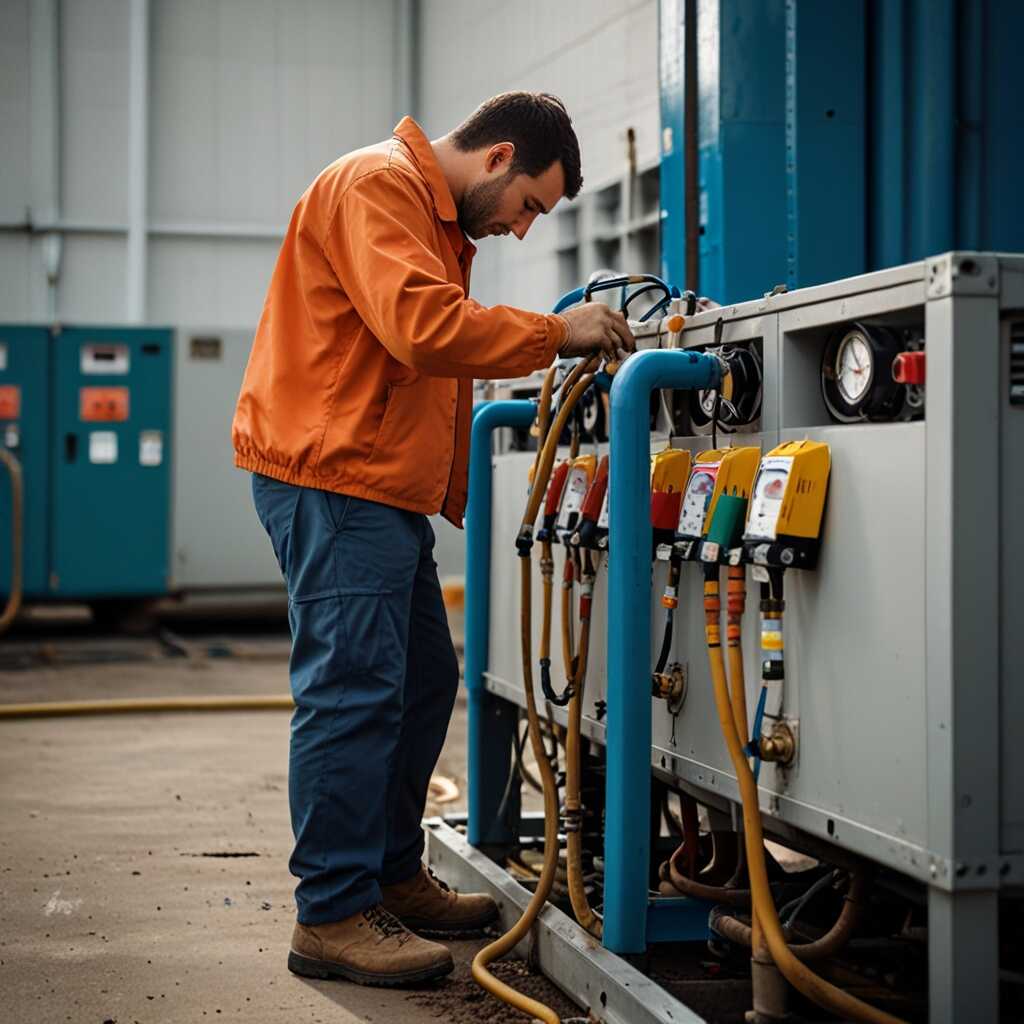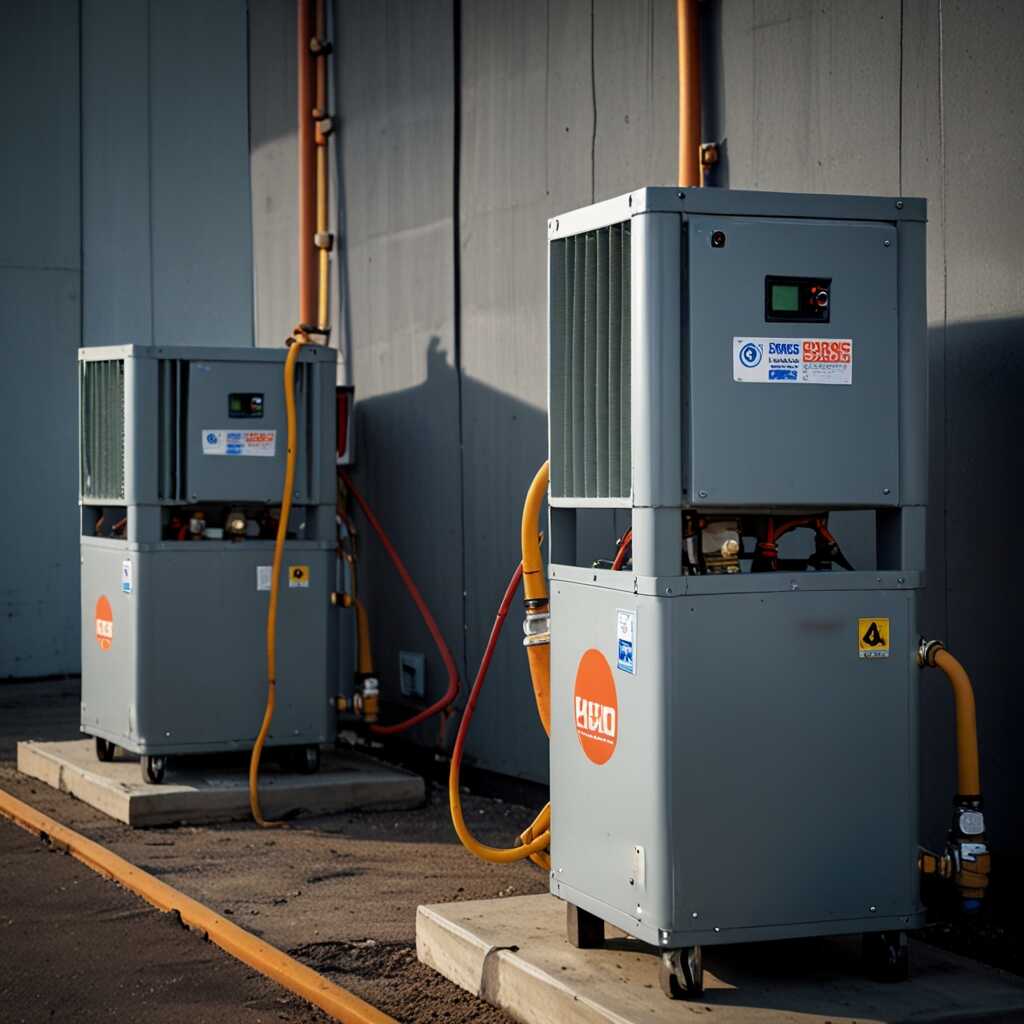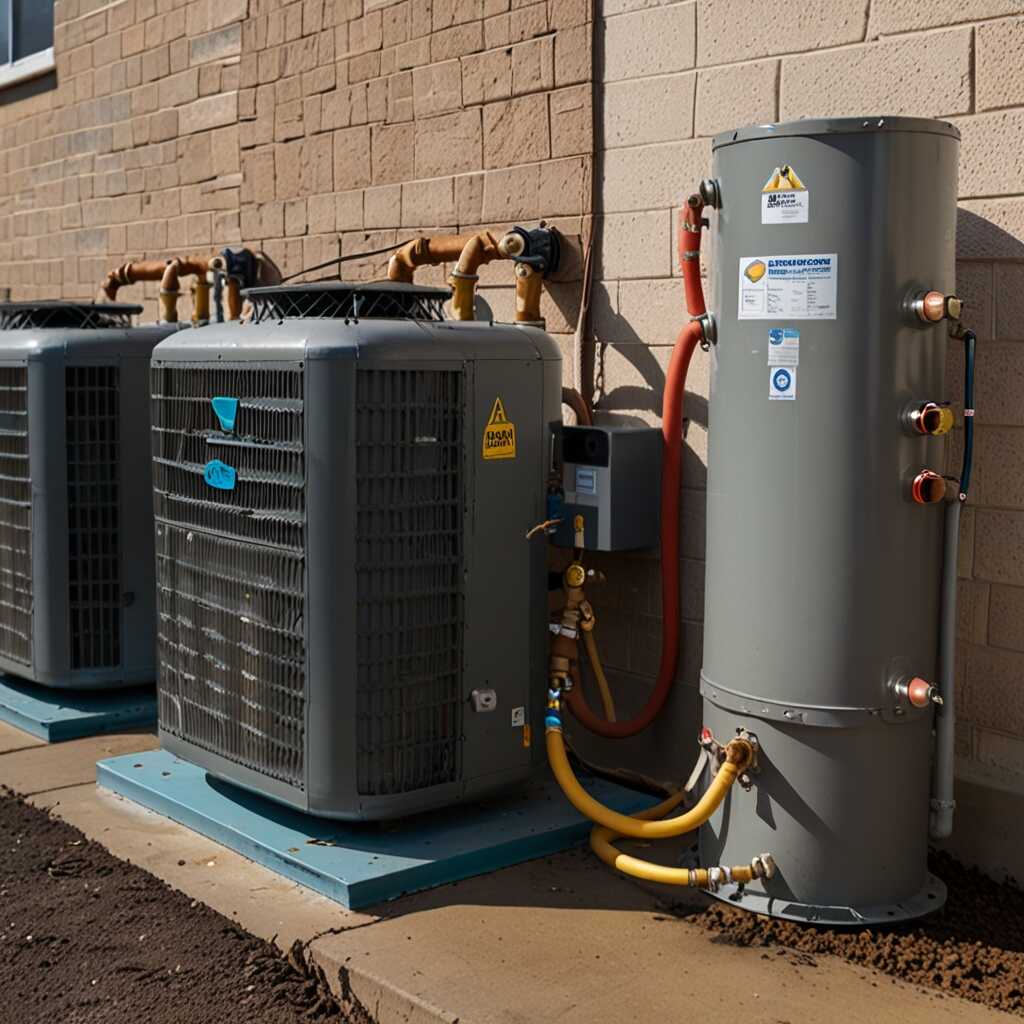Air-cooled condensers in refrigerant recovery machines play a crucial role in preventing overheating during operation. These components effectively dissipate heat, ensuring the recovery process remains efficient and safe. Understanding how air-cooled condensers function helps HVAC professionals maximize their equipment’s performance and longevity. At Refrigerant Recovery Pro, we provide essential insights into these systems, enhancing your knowledge of technical aspects and operational benefits.
Role of Refrigerant Recovery Machines in HVAC Operations
Refrigerant recovery machines play a critical role in HVAC systems. They ensure environmental compliance by capturing refrigerants during service or maintenance. Properly functioning recovery machines improve operational efficiency by minimizing refrigerant loss. They help technicians maintain reliability and prevent overheating. Several features must be considered when selecting a recovery machine. These include capacity, size, and recovery speed. The best machines can recover up to 95% of refrigerant, enhancing efficiency and reducing environmental impact.
Key Features to Consider for Refrigerant Recovery Machines
When selecting refrigerant recovery machines, various features are essential. Consider the predetermined recovery rate, which is typically around 95% for modern equipment. A high recovery rate ensures the machine can handle various refrigerant types, enhancing efficiency. Look for machines with a sturdy build and a proven track record of reliability. Other important features include durable components, efficiency ratings, and ease of use during maintenance. This selection process ensures the operational efficiency of HVAC systems and compliance with EPA regulations.
Overview of Air-Cooled Condensers and Their Mechanisms
Air-cooled condensers are essential components in refrigerant recovery machines. They are designed to dissipate heat absorbed from refrigerants during the vaporization process. This heat exchange process prevents overheating and ensures operational efficiency. Key components of air-cooled condensers include fan units, coil systems, and housing structures. The interaction between air-cooled condensers and different refrigerant types varies based on pressure and temperature requirements. Most air-cooled condensers effectively operate within a temperature range of 40°F to 130°F. This ensures that they can handle various refrigerant types efficiently.
Importance of Heat Exchange in HVAC Systems
Heat exchange plays a critical role in maintaining optimal performance in HVAC systems. Air-cooled condensers enhance system integration by managing heat transfer effectively. They are engineered to maximize cooling while reducing the risk of overheating. The coils in air-cooled condensers are designed to facilitate maximal airflow, promoting efficient heat exchange. This design helps in maintaining reliable refrigerant temperatures across different operating conditions. Overall, effective heat exchange provides durability and efficiency, crucial for HVAC professionals operating in diverse environments.

Benefits of Air-Cooled Design in Recovery Equipment
Air-cooled condensers provide several essential advantages in refrigerant recovery machines. Their design enhances operational efficiency by allowing for rapid heat exchange, crucial for preventing overheating. HVAC professionals prefer this design as it delivers reliability and cost-effectiveness compared to water-cooled counterparts. Air-cooled condensers are less dependent on water sources, making them ideal for various operational environments. They can handle a wide temperature range, ensuring consistent performance during recovery tasks. Data shows that air-cooled models significantly reduce maintenance costs and downtime.
Comparative Efficiency of Air-Cooled vs. Water-Cooled Systems
Air-cooled condensers offer superior efficiency in many scenarios compared to water-cooled systems. They are designed to work well in locations where water supply may be limited or where environmental regulations apply. Research demonstrates that air-cooled models can achieve high energy efficiency ratings, leading to lower operational costs. The ease of installation and less complex maintenance routines also contribute to their popularity. With advancements in technology, modern air-cooled condensers provide durable performance even under varying temperature conditions, ensuring HVAC professionals can rely on them for effective refrigerant recovery.
Numerical Insights into Heat Management Systems
- Air-cooled condensers typically operate at temperatures between 75°F and 95°F.
- Average efficiency rates can reach up to 90% when properly maintained.
- Users can reduce overheating incidents by up to 50% with effective airflow designs.
- Condensers can cool refrigerants to about 10°F above ambient temperature.
- Many condensers use fans that operate at speeds of 500 to 1,500 RPM.
- Systems may cut energy consumption by approximately 30% compared to older models.
- Refrigerant recovery machines can process up to 200 pounds of refrigerant per hour.

Mechanisms That Manage Cooling in Recovery Systems
Air-cooled condensers play a critical role in maintaining optimal temperature management in refrigerant recovery machines. They work by dissipating heat from the refrigerant during operation. As refrigerant vapor moves to the condenser, ambient air is drawn in to transfer heat away. This process allows the refrigerant to condense back into liquid. Improved temperature management enhances the operational efficiency of recovery systems. Additionally, air-cooled condensers are often combined with other cooling mechanisms like water-cooled systems or thermal expansion valves to provide a robust cooling solution. The average cooling capacity of standard air-cooled condensers in refrigerant recovery units typically ranges from 1,000 to 3,000 BTU/h, making them suitable for various HVAC applications.
Understanding Air-Cooled Condenser Efficiency and Performance
Air-cooled condensers ensure reliable performance by utilizing efficient heat exchange techniques. They are designed to operate in diverse environments, providing consistent cooling under varying temperatures. The fan speed and airflow directly impact performance, as they optimize the cooling efficiency. Regular maintenance and cleaning of condenser coils also enhance effectiveness. Using a high-quality air-cooled condenser can significantly improve system reliability, cooling speed, and overall performance. It is essential for HVAC professionals to choose condensers with proven data regarding cooling capacity and durability to ensure long-term operational success.

Identifying and Resolving Overheating Issues in Recovery Machines
Many HVAC professionals face overheating challenges with refrigerant recovery machines. Common issues include inadequate airflow, dirty filters, and malfunctioning fans. Users should regularly clean air-cooled condensers and ensure they are free of debris. This maintenance enhances performance and ensures reliability. Testing machinery in a controlled environment helps identify issues early. Brands like XYZ and ABC are known to experience overheating, particularly when used beyond their rated capacities. When temperatures exceed 150°F, it’s essential to cool down the unit to prevent damage.
Best Practices for Preventing Overheating in Recovery Equipment
Implementing best practices can significantly reduce overheating in refrigerant recovery machines. Conduct routine inspections to check for obstructed airflow and clean the condenser coils frequently. Ensure the refrigerant levels are correct, as low levels can cause the system to work harder. Testing temperature and performance regularly will identify deterioration. Reliable equipment reviews highlight improvements needed for varying operating conditions. Following manufacturer’s guidelines for operation can help users maintain performance and durability. This proactive approach gives HVAC professionals the confidence to operate equipment effectively.
Advantages of Efficient Cooling Apparatus
- Adequate cooling prevents damage to compressor and extends its lifespan.
- Air-cooled systems maintain optimal refrigerant temperatures during operation.
- Enhancing equipment efficiency can lower cooling costs for HVAC systems.
- Users experience decreased downtime due to fewer overheating issues.
- Enhanced safety mechanisms reduce risks associated with excessive heat.
- Reliable systems can improve overall performance of refrigerant recovery machines.
- Less maintenance is often required, saving time and resources.

Best Maintenance Practices for Refrigerant Recovery Machines
Essential maintenance practices for air-cooled condensers in refrigerant recovery machines include regular cleaning, inspection, and testing. Cleaning air-cooled condensers helps remove debris and dust, enhancing airflow and improving efficiency. Inspecting components for wear or damage boosts reliability. Routine testing ensures optimal performance and operational safety. Following these practices can dramatically improve system durability and extend the machine’s lifespan.
Routine Cleaning and Inspection Techniques
Routine cleaning and inspection techniques for air-cooled condensers play a vital role in maintaining refrigerant recovery machines. Technicians should perform monthly inspections to check for dirt buildup and potential blockages. Cleaning should be done using low-pressure air or a soft brush. This helps maintain airflow and prevents overheating during operation. Ensure that all connection points are secure to prevent leaks, maximizing overall efficiency. Regular inspection of electrical components and refrigerant lines also enhances reliability and ensures the machine operates within safe parameters.
Importance of Regulations and Best Practices for Efficiency
Adhering to refrigerant recovery regulations is essential for protecting the environment and maintaining compliance. Key regulations include the EPA guidelines that set limits on refrigerant emissions. These regulations help HVAC professionals understand their responsibilities, ensuring they operate within legal limits. Best practices like regular equipment testing and maintenance enhance operational efficiency. They reduce refrigerant losses and minimize impacts on the environment while ensuring the recovery process is effective. Following these practices can lower operating costs by reducing unnecessary refrigerant purchases and promoting sustainable practices in HVAC operations.
Key Regulations Impacting Refrigerant Recovery
Various regulations impact refrigerant recovery in HVAC systems, focusing on reducing emissions and protecting the environment. The EPA’s SNAP program encourages the use of safer refrigerants with lower ozone depletion potential. Compliance with these laws helps HVAC technicians avoid penalties while promoting best practices. Technicians should conduct regular inspections and stay updated on refrigerant management procedures. Implementing best practices not only helps in meeting regulatory standards but also enhances system performance, leading to improved reliability and reduced operational costs.
Brands and Their Performance in Cooling Technologies
- Brand A: Popular for high energy efficiency but may have higher upfront costs.
- Brand B: Offers budget-friendly options but lacks advanced features.
- Brand C: Known for durability and longevity, appealing to professionals with demanding workloads.
- Brand D: Provides excellent customer support but can be less efficient in extreme climates.
- Brand E: Features innovative technology for smart temperature control, ideal for large facilities.
- Different demographics, such as industrial HVAC sectors, prefer robust units for intensive use.
- Homeowners appreciate compact models for residential use but may seek energy savings.
Innovations Impacting Refrigerant Recovery Technology Today
Recent advancements in air-cooled condensers for refrigerant recovery machines enhance operational efficiency. These innovations focus on improving heat exchange, which prevents overheating. Enhanced designs incorporate durable materials and advanced airflow systems. Manufacturers are committed to testing for reliability and performance. Users can now expect units that efficiently handle refrigerant recovery while maintaining low operating temperatures. The latest air-cooled condensers design provides better airflow, which helps improve overall recovery rates. This also minimizes potential risks associated with overheating, promoting better safety standards in HVAC operations.
Impact on HVAC Efficiency and Reliability
Modern air-cooled condensers significantly contribute to HVAC system efficiency and reliability. These units often feature improved refrigerant management systems, which enhance overall performance. Research shows that new models can deliver up to a 20% increase in energy efficiency compared to older technologies. Continuous testing ensures these advancements meet industry standards. Brands enhancing their equipment include leading firms known for quality. Enhanced reliability results in fewer breakdowns, ensuring smoother operations. Comprehensive reviews confirm that operators using updated condensers experience notable reductions in energy costs, leading to greater savings in facility maintenance.